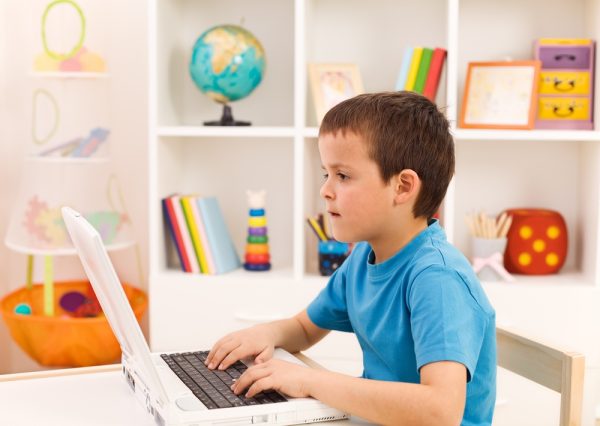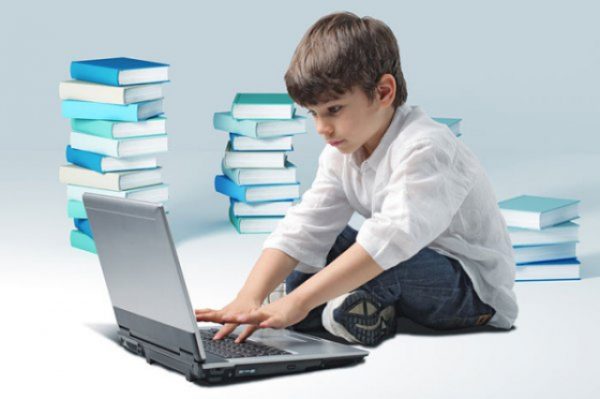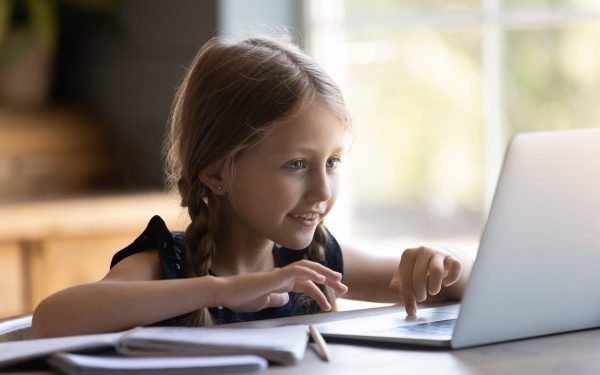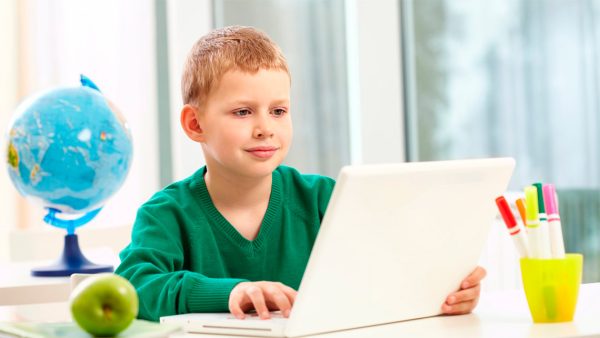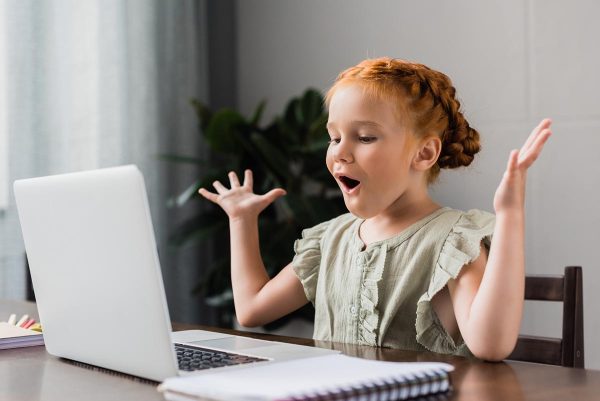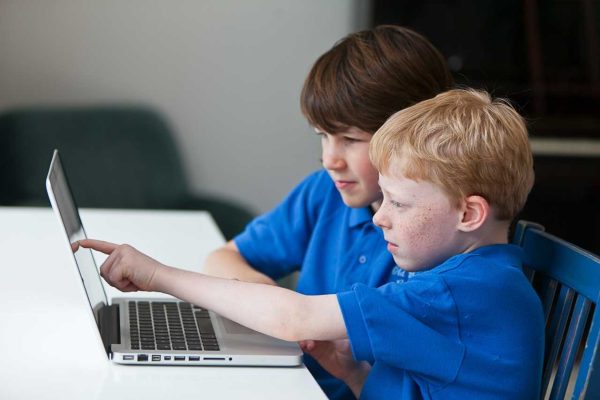
Computer literacy for children from 7 years old
Computer use, office programs

Why is computer training so important for children? It’s simple: today technology is synonymous with the modern world, an integral part in all spheres of life.
How can we make the most of the benefits of the 21st century? Know from childhood how these very information technologies work. And remember that this will make life easier, open the child’s creative potential, develop the necessary skills and personality.
How do you teach a child
to be computer literate?
Getting to know the computer always starts with the basics – basic commands, programs, and user skills. All of this will help your child become familiar with the technology and use it competently and profitably.
Computer literacy lessons for children solve another important issue – Internet safety. A ban on the use of the Web is unlikely to help: such fruit is always sweet.
But the result will be completely different if you explain to a child how to work with information, what you can do and what is potentially dangerous.
Unfortunately, school computer lessons come too late. It is necessary to establish a healthy relationship with information technology from an early age – then gadgets will not be an obsession for a child, but a friend and helper in achieving all goals.

Computer Literacy
for Kids classes at GurukidsIT are:

- Computer training at the “Power User” level
- Lesson length at your choice – 60/120 minutes
- Presentations, video lessons, compulsory practice and control “diploma” project
- Basic and advanced levels.
Thanks to the course your child will be able to
- Work on a PC
- Type, edit, and format texts
- Calculate in spreadsheets
- Create, creating bright, colorful presentations
- Understand the basic principles, programs, and processes of the PC.
We strive to make learning interesting, varied and not boring for your child. Because only in this case, the information obtained correctly stored in the memory and will benefit in the future.
Computer Literacy for Kids
The basics of computer literacy for children are the key to harmonious development today. You surely want your child to see the computer not only as a tool for games and entertainment! It is possible. The main thing is to give him the necessary knowledge and skills in time.
With the help of mastered technology, children can stand out at school. For example, to be more creative in the realization of any projects, to search for necessary information on the Internet and correctly process it, to learn fast and quality interaction with the computer.
All this is fertile ground for skills and talents. After all, the first steps in IT become a powerful impetus for the development of analytical thinking, the ability to the exact sciences, foreign languages, the creative self.
By the way, among the undeniable advantages is a promising, secure future. After all, the acquired knowledge can become the ideal stimulus for getting a relevant and interesting profession.

Course content
MODULE 1: Basic Operation
Mouse/touchpad.
Taskbar.
Keyboard.
Browser
The Internet.
By the end of the module the student will learn the user interface, the basic techniques of work with the mouse and touchpad: moving the pointer, selecting an object, moving an object, performing actions with objects by double-clicking the left mouse/touchpad button. The student will learn how to select a language, learn the PC keyboard and work with keyboard simulators. Master the Internet: launching the browser, search engines, address bar, opening a site by address, finding information or a site by request, saving search results, working with new tabs, bookmarks, and incognito mode. Will master Google Chrome and the rules of behavior on the Internet.
MODULE 2 Basic Computer Skills
Basic computer concepts: operating system, desktop, file, shortcut, folder, main menu, taskbar, etc.
Archive.
Mail.
Computer literacy classes for children will teach how to use keyboard commands, switches, and the computer search engine. Will learn how to operate and customize the taskbar, understand the task manager, and perform basic file/folder operations: create, open, rename, move, copy, delete. Will gain skills in creating shortcuts, managing windows, and searching for files on the computer. Will be able to work with archives and email.
MODULE 3. Computer hardware
Input devices.
Output devices.
Memory devices.
Processor.
Graphics card.
The motherboard.
By the end of the module the student will learn the features of the computer and possible operating systems. Will have an idea about input and output devices, memory devices. Will know what the processor, video card, motherboard are needed for and what they are, what to pay attention to when buying a computer.
MODULE 4. Digital Creativity
MS Paint.
3D Paint.
Photoshop Online.
Movavi Video Suite.
By the end of the module, the student will know the basic tools for drawing in MS Paint. Learn the basics of 3D modeling in 3D Paint. Learn simple photo manipulation in Photoshop Online and how to create video clips in Movavi Video Suite.
MODULE 5. Google Cloud Storage
Google Drive.
Google Docs.
Google Spreadsheets.
Google Presentations.
Google Forms.
Google Drawings.
Google Maps and Sites.
By the end of the module the student will learn all the features of a Google account and the basics of Google Drive: storing information, uploading and deleting files, working in Google Docs, working with Google Tables. They will learn how to create and use all the features of Google presentations, conduct surveys and tests in Google forms, create diagrams in Google drawings and work with Google maps: interface, menu, gallery, route, creating their own map.
MODULE 6. Office software: Microsoft Office
MS Word.
MS Excel.
MS Power Point.
By the end of the module the student will study the user interface of office applications and complete practical tasks for each of them: in the text editor Word the student will learn to work with the basic tools and will design a creative research project: general rules of text design, structure of the document, creating documents based on templates, text input, text editing, finding and replacing text fragments, document design, formatting symbols, paragraphs and sections, ways to insert tables, inserting symbols, images, table of contents and omissions. In the Excel spreadsheet editor, the student will learn how to work with tables and formulas, build charts and graphs: creating, opening and saving a document, cells, ranges, worksheets, using formulas, learning to solve problems in tabular calculations, learning types of charts and their formatting. In PowerPoint, the student will learn the structure of a presentation, learn to create template slides, work with text and design presentations according to rules and guidelines, add symbols, pictures, sounds and tables.
MODULE 7. Final Project
By the end of the module, the student will have completed a creative final project for the Computer Literacy course.
What’s next?

GurukidsIT –
a computer literacy school for children of all ages. Our students start with the very basics, after which they go higher and higher: they learn programming languages, design, modeling, get internships and get jobs in large IT companies.
But all big goals are achieved in small steps. Online computer literacy courses for children are the first and very important step on the way to dreams and life realization.
